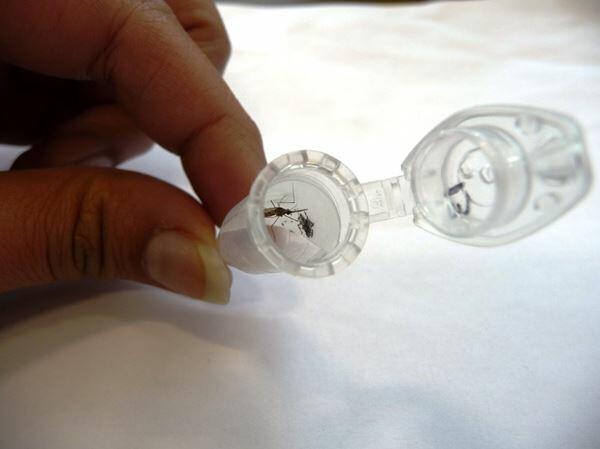
A new technique pioneered at Liverpool School of Tropical Medicine (LSTM) is improving the detection and monitoring of insecticide resistance in field populations of an important malaria-carrying mosquito.
Researchers at LSTM, led by Dr Charles Wondji have developed a new technique which encourages the female Anopheles funestus mosquitoes to lay eggs which are then reared into adult mosquitoes to provide sufficient numbers to determine levels of insecticide resistance and to characterise the underlying mechanisms.
Explaining the significance, John Morgan, who designed the technique, said: “Malaria is the main cause of death in Uganda with some 12 million cases recorded annually. The Ministry of Health relies heavily on insecticide treated nets and spraying to control mosquitoes. The effectiveness of those control programmes depends on the ability to detect and monitor insecticide resistance.
“The An.funestus mosquito is difficult to collect and rear from the field and hence published studies of insecticide resistance in this species are limited. This new forced egg laying technique encourages the females to lay eggs which we were then able to rear into viable populations.
“This allowed us to study levels of resistance to particular insecticides and in doing so, we have been able to find the first documented resistance to pyrethroid/DDT insecticides in East Africa. This will enable researchers to map the distribution of this resistance and allow the Ministry of Health to modify its vector control programme, thereby increasing its effectiveness and helping to reduce the transmission of malaria.”
The paper is published in PLoS ONE.
-ends-
For further information, please contact:
Alan Hughes, Communications Manager
Office: +44 (0)151 705 3308
Notes to Editors
The Liverpool School of Tropical Medicine (LSTM) has been engaged in the fight against infectious, debilitating and disabling diseases for more than a hundred years and continues that tradition today with a research portfolio in excess of £159 million and a teaching programme attracting students from over 70 countries.